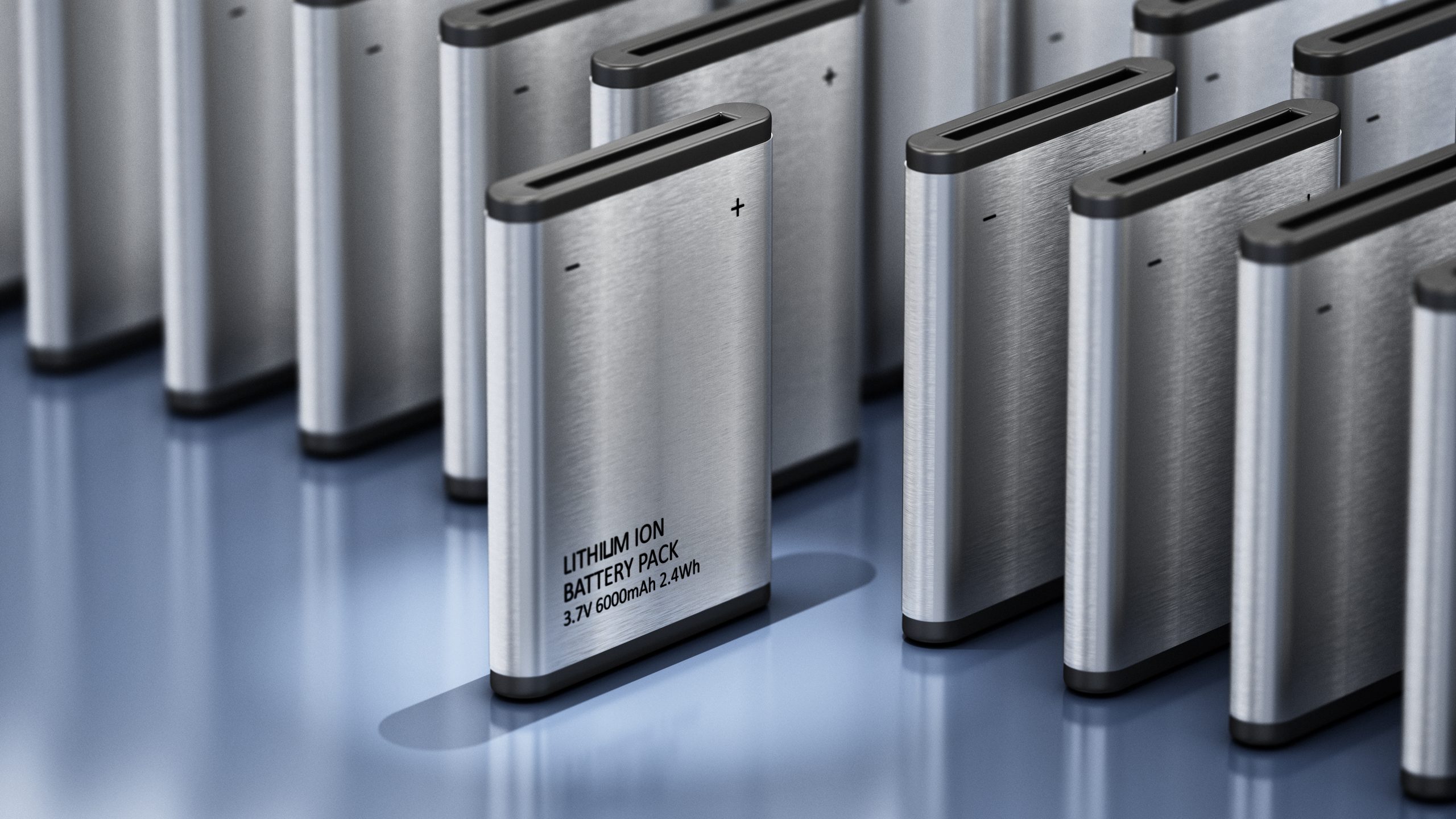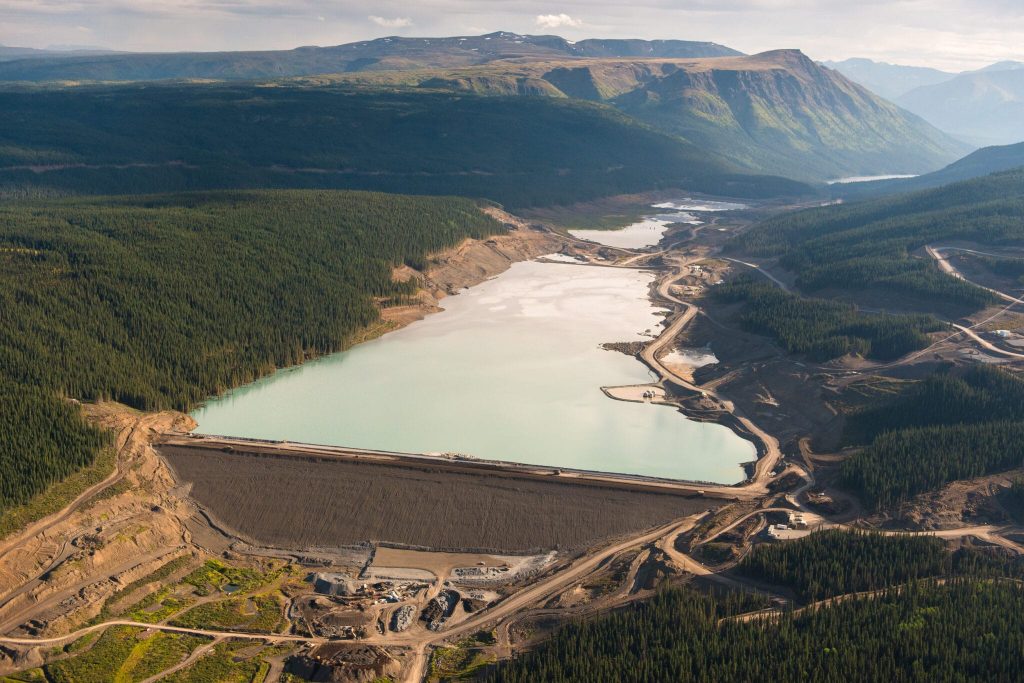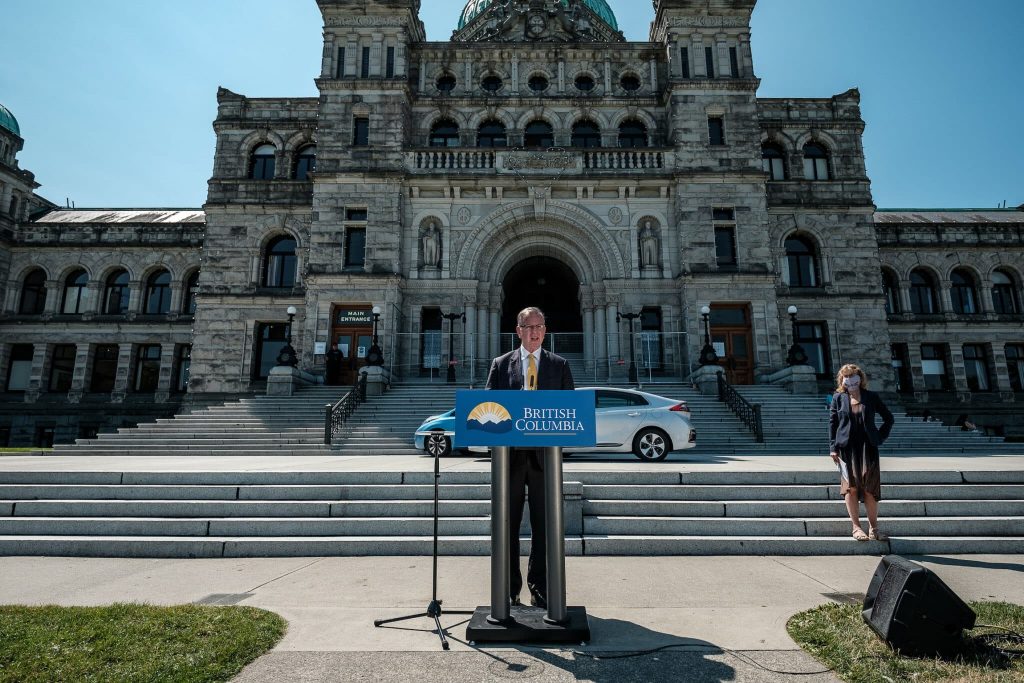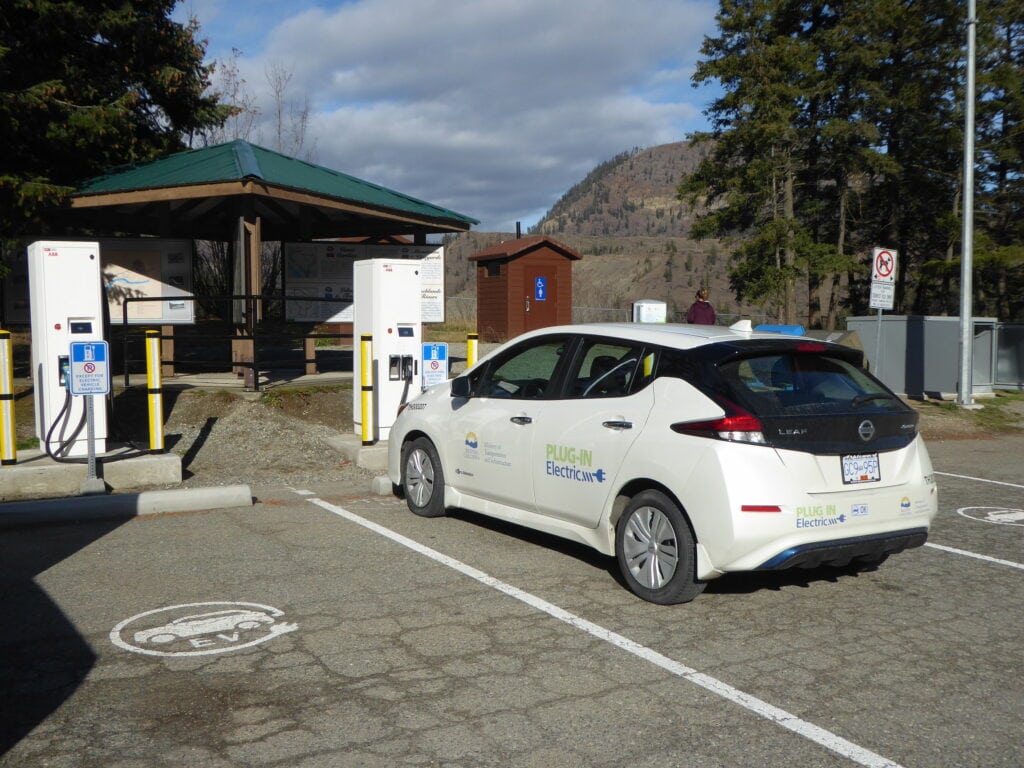



February 2, 2022



Electric vehicles are booming in B.C. and that means the province has a unique opportunity to divert some of the world’s most sought-after clean-energy minerals from a potentially hazardous waste stream
February 1, 2022
Original article published in The Narwhal
What happens when an electric vehicle battery the size of a small dinner table reaches the end of its life?
That’s the question jurisdictions across Canada and the world are grappling with as more and more electric vehicles hit the roads in the coming decades. In B.C., government estimates there will be more than 2.5 million of these vehicles cruising along the province’s roadways by 2040.
With so much focus in B.C. on growing the mining sector and especially supplying minerals for the clean energy revolution, critics say the province is overlooking the potential economic benefits of extracting materials from used-up electric vehicle batteries — materials that don’t require the creation of new, environmentally impactful, mines.
There are already more than 60,000 electric vehicles on B.C.’s roads. Each car is equipped with a lithium-ion battery and while the design of those batteries is much the same as the one in your smartphone, electric vehicle batteries are, by necessity, much bigger. A single car battery can weigh several hundred kilograms and is made up of materials like manganese, graphite, nickel, cobalt and lithium.
These behemoths of the battery world have an average lifespan of eight to 15 years, which means as the electric vehicle market continues to grow, B.C. faces an important opportunity to rethink the recycling sector.
It’s work that’s already underway across the continent.
Kunal Phalpher, chief strategy officer at Li-Cycle, a Toronto-based lithium-ion recycling company with four facilities operating and under construction across North America — including in Kingston, Ont. — said the more batteries become available, the better the opportunities become for recyclers.
He said it’s crucial to plan for recycling right at the start of the electric vehicle growth curve.
“In the next eight to 10 years we’re going through this first wave of rapid growth and rapid increase in demand for these materials where you’re still going to need new primary resources [from mines],” he told The Narwhal.
“But it’s also the time to build up infrastructure to manage [batteries] at end of life so that we can continue to chip away and increase the percentage of recycled material back into the battery.”
Phalpher said he anticipates a sector-wide shift to reusing more materials. Electric vehicle batteries aren’t currently produced with recycled minerals because there’s not enough supply, he said.
“But as we get into the next decade, we’ll start to see a sharper increase in that,” he said. “And then you can eventually work towards not having to build new resources for pulling material out of the ground and really drive [production] through secondary sources.”
Until the time comes when recycling facilities start receiving high quantities of depleted batteries, the demand for minerals is expected to continue to increase exponentially.

While B.C. is not a source of cobalt, nickel and lithium, it is home to several copper mines and a major aluminum smelter — materials commonly used in auto manufacturing.
The basic composition of electric vehicle batteries is projected to remain fairly constant over the coming years, but one mineral found in B.C. is showing promising results in extending the lifespan of lithium-ion batteries.
Tellurium can be mined directly or sourced as a by-product produced during copper smelting.
In northwest B.C., just south of Smithers, First Tellurium’s proposed tellurium, silver and gold mine could become a key supplier in the electric battery boom.
First Tellurium points to research in Singapore and Texas where tellurium was added to existing lithium-ion technologies, the results of which “extend battery life up to 400 per cent and in some cases hold 10 times the charge.”
The Pacific Institute for Climate Solutions launched a three-year project in 2021 to research the possibilities of using tellurium to manufacture safer and more efficient electric vehicle batteries.
“Extending the range and safety of zero-emission vehicles would help accelerate adoption rates around the world, and support progress towards a sustainable circular economy through raw material recycling,” Bentley Allan, associate director of the institute, said in a press release.
The experiment with tellurium is just one example of many projects aimed at reducing demand and increasing efficiency, according to Michael Stanyer and Balakrishnan Venkata with Plug in BC, an electric vehicle advocacy program run by the Fraser Basin Council.
“There are so many other cases that people have been researching and working on in order to reduce the need for these rare metals that are being used,” Venkata said over a Zoom call, noting a Surrey-based company called American Manganese, which is working to recover raw materials from spent batteries to produce new ones. “They’re able to get close to 100 per cent recovery of all materials that can be used in the new batteries.”
Stanyer noted Vancouver’s hybrid vehicle taxi fleet means the city has experience dealing with used car batteries.
“The batteries in those have been around for a long time and there’s a well-developed sort of niche ecosystem, removing and replacing and using those batteries and getting them into secondary storage or sort of stationary energy storage projects.”
But in anticipation of the rush for electric-vehicle resources in B.C., onlookers are saying the province should be doing much more to ensure the leftover potential in depleted batteries is being mined. And as B.C. positions itself as a supplier of responsible minerals, critics say the province must do more to ensure the mining for clean technology is itself clean.
Nikki Skuce, director at Northern Confluence, a responsible mining advocacy organization, sees the repurposing of battery waste streams as a way to potentially mitigate the negative impacts of mines in B.C.
The province needs “to really amp up repurposing and recycling and also diminish our consumption,” Skuce told The Narwhal.
Skuce, whose organization is part of the B.C. Mining Law Reform Network, has advocated strenuously for changes to B.C.’s mining laws, some of which have not been reformed for more than a century. Mining watchdogs and critics became more vocal about flaws in B.C.’s mining legislation and regulatory oversight in the wake of the Mount Polley mine spill, one of Canada’s largest environmental disasters. In 2014, the tailings dam at the Mount Polley mine in central B.C. failed, releasing 24 million cubic metres of contaminated waste into lakes and waterways, a catastrophic event which mining watchdogs say could be repeated elsewhere in the province unless B.C. strengthens its regulations.
Early last year an internal audit from the B.C. Ministry of Energy, Mines and Low Carbon Innovation found the province still has much work to do in the wake of Mount Polley to ensure its mines, and particularly the tailings ponds that hold mining waste, are safe.
Some positive developments have already come out of advocacy work for cleaner and safer B.C. mines. First Tellurium’s proposed mine, for example, is one of the first Canadian projects to join the Initiative for Responsible Mining Assurance, a third-party certification program that rates mines on sustainability and responsibility.
“First Tellurium proudly adheres to and supports the principles and rights set out in the United Nations Declaration on the Rights of Indigenous Peoples and in particular the fundamental proposition of free, prior and informed consent,” the company said in an emailed statement about recent developments in the electric vehicle battery sector.
Yet ongoing concerns with B.C.’s mining regulations are part of the reason Skuce and others are encouraging the province to take electric vehicle battery recycling seriously.
Skuce co-authored a recent report for the Pembina Institute that calls on B.C. to work with the federal government and learn from other jurisdictions like California, which is already well on its way to supporting battery recycling.
The report notes that B.C. is poised to reap the economic rewards from jumping on the recycling bandwagon.
“As an early leader in [electric vehicle] adoption, B.C. will see growing demand for end-of-life recycling, which offers the province the opportunity to also emerge as an early regional leader in battery recycling in the Pacific Northwest, and capture the associated economic benefits.”
And those benefits could be quite notable.
Once recovered, the mineral components of batteries can be sold and used in numerous applications, including the production of new batteries — a practice which could reduce the cost of new electric vehicle manufacturing. The extraction and recycling process also drives employment directly from what would otherwise be a waste stream.
A 2020 report published in the journal Sustainability notes recycling is set to become an increasingly robust industry, playing an important role particularly in local economies.
“Recycling is expected to become a significant industry in the future,” the report notes, “generating billions of dollars in revenue, tax income and jobs, many of which would be in countries and regions that currently do not benefit from battery-related industrial activities.”
The report also notes that because transporting used electric vehicles batteries can be so expensive, there are “strong incentives” for places like B.C. to localize recycling infrastructure.
What’s more, battery recycling is anticipated to lead to a global decrease in the need for rare earth mines. According to a report by the International Zero-Emission Vehicle Alliance, of which B.C. and Canada are members, “developing recycling streams to recover approximately 90 per cent of the critical battery materials can significantly reduce the need for raw material mining from 2040 on.”
The alliance’s analysis found that such recycling could reduce the need for new material mining by 20 per cent in 2040 and 40 per cent in 2050.

In addition to creating jobs and economic opportunity, there’s another incentive when it comes to finding ways to repurpose spent electric vehicle batteries: dangerous waste.
As a means to push forward its plans for increasing the electric vehicle sector to reduce greenhouse gas emissions, B.C. passed legislation in 2019 that requires auto manufacturers to meet provincially mandated electric vehicle sales targets. By 2025, 10 per cent of all new light-duty vehicles sold need to be zero-emission vehicles and that percentage scales up to 30 per cent by 2030 and 100 per cent by 2040.
“We’ve got really ambitious targets for [electric vehicle] adoption and the early ones have already been surpassed,” Skuce, with Northern Confluence, said. “We’re going to start seeing more in the waste stream soon.”
She said the province needs to navigate trade regulations and issues of hazardous waste transport, given electric vehicle batteries have a habit of catching fire or exploding if handled improperly.
“In developing a strategy looking ahead, you can see where all of these potential barriers are, and what needs to be shifted for this particular stream — and opportunity — to ensure that it can be done safely in British Columbia.”
B.C.’s Ministry of Jobs, Economic Recovery and Innovation said a number of initiatives are already underway to support the sector.
“With the highest uptake rates of electric vehicles in North America, and a number of local companies across the [electric vehicle] supply chain, B.C. is positioned to become a leader in the industry,” a ministry spokesperson said in a statement to The Narwhal.
They highlighted the Innovative Clean Energy Fund, which “provides support for pre-commercial clean energy technology projects, clean energy vehicles, including producing low-cost, high-performance batteries for electric vehicles.”
Such incentive programs are important for the fledgling battery recycling industry, because as Environment and Climate Change Canada put it, the remaining barrier to progress is cost.
“Currently, the economics of [electric vehicle] battery recycling may not provide sufficient market incentives to capture all of the batteries reaching the end of life,” the federal ministry wrote in an email to The Narwhal. “One of the main barriers to scaling up [electric vehicle] battery recycling is the cost of reverse logistics: the process to collect and transport end-of-life [electric vehicle] batteries from consumers to recycling facilities.”
Li-Cycle’s Phalpher agreed.
“One of the challenges of the industry has always been logistics costs — distance and weight result in high cost,” he said, adding Li-Cycle is building facilities in New York, Arizona and Alabama as a means to reduce transportation costs.
“B.C. definitely needs a strategy around that and I think that needs to happen now, or yesterday, but we do have some initiatives happening in the province,” Skuce said.

Those initiatives include the province’s extended producer responsibility program, which B.C. launched last year. The five-year program is designed to ensure manufacturers — including electric vehicle battery producers — are responsible for recycling their own products.
“B.C. is committed to having producers be fully responsible for collecting and recycling the products and packaging it puts into the B.C. marketplace, shifting the responsibility and costs from local government and taxpayers to producers and consumers,” the province’s Ministry of Environment and Climate Change Strategy told The Narwhal.
The ministry noted hybrid and electric vehicle batteries will be added to provincial recycling regulations in 2023 and the programs and processes to ensure those batteries are being recycled should be up and running by 2026.
The producer responsibility program requires companies to “manage their products to the highest level possible on the pollution prevention hierarchy,” the ministry stated, listing the hierarchy as “reduce, reuse, recycle, recover, residuals management.”
The program may require producers to “redesign products that are more recyclable or invest in research and development projects to improve recycling and drive technological innovation,” according to the ministry.
This last point is key, Skuce said, explaining that not only is the technology new and rapidly evolving, there’s also no standardization of how electric vehicle batteries are built, which in turn leads to challenges within the recycling sector.
“There needs to be government regulation and policies so that these batteries are built to recycle,” she said. “And that that information is transparent — of how to dismantle and recycle them and all the different components within them — because that’s a basic thing that doesn’t exist right now.”
In the Pembina report, Skuce and her co-authors note the difficulties of recycling car batteries are not insurmountable but certain aspects pose challenges.
“Currently, less than five per cent of batteries are recycled worldwide, because it’s a far more complicated process than recycling old household batteries,” the report states. “Before they can be recycled, batteries must be discharged, stabilised and then dismantled to at least the module level, so that cell components can be separated into different material streams.”
Phalpher agreed it’s complicated but notes the five per cent statistic includes consumer products such as laptops and smartphones and is more about collection of dead batteries, particularly household items, than the actual recovery of raw materials.
“If your car dies, you don’t go buy a new car and leave the old one in the garage — you take it to the dealer and the car companies are a little bit more focused on circularity in the raw materials,” he said, explaining it’s difficult to track how many batteries are actually being returned to recycling facilities.
Per battery, however, it’s a much more cheerful statistic.
“We recover up to 95 per cent of the various materials in the lithium-ion battery,” he said.
Skuce noted B.C. is already home to one of the largest recycling facilities in North America — Retriev Technologies, based in Field. Retriev recently announced a merger with U.S.-based Heritage Battery Recycling, which includes operations in southern California. The state has more than 400,000 electric vehicles on its roads currently and recently struck a task force to advise its government on electric vehicle battery recycling.
On Canada’s national scale, the federal government acknowledged the need to encourage the development of recycling infrastructure.
“Recycling of the lithium and other critical metals will be key to meeting the projected global demand for the metals associated with increased adoption of batteries for [electric vehicles] and other stationary energy storage systems while also reducing the environmental impacts from end of life batteries,” Environment and Climate Change Canada said.
The ministry noted it is collaborating with other federal departments to “develop a sustainable battery innovation and industrial ecosystem in Canada, including establishing Canada as a global leader in battery manufacturing, recycling and reuse.”
The ministry added it is also “exploring innovative ways to enable [electric vehicle] batteries to have a ‘second life,’ when no longer suitable for powering vehicles, in stationary energy storage applications.”
Phalpher said jurisdictions need to work together to facilitate the recycling process.
“On the large volume side, which is the transport of batteries, I think what would help … is just streamlining regulations around permitting recycling facilities and transport,” he said. “In Canada, for example, there’s slightly different regulations and paperwork to transport batteries and how you classify batteries to get them to a waste facility. Harmonizing some of the rules would just make it easier for customers and companies.”
Skuce agreed and noted the Pembina report calls on the province to engage with “neighbouring jurisdictions to ensure efficient and safe collection and transport of batteries for recycling purposes, including across borders.”
She said the bottom line is simple.
“With B.C. being a leader in adopting [electric vehicles], it should also be a leader in repurposing or recycling.”
